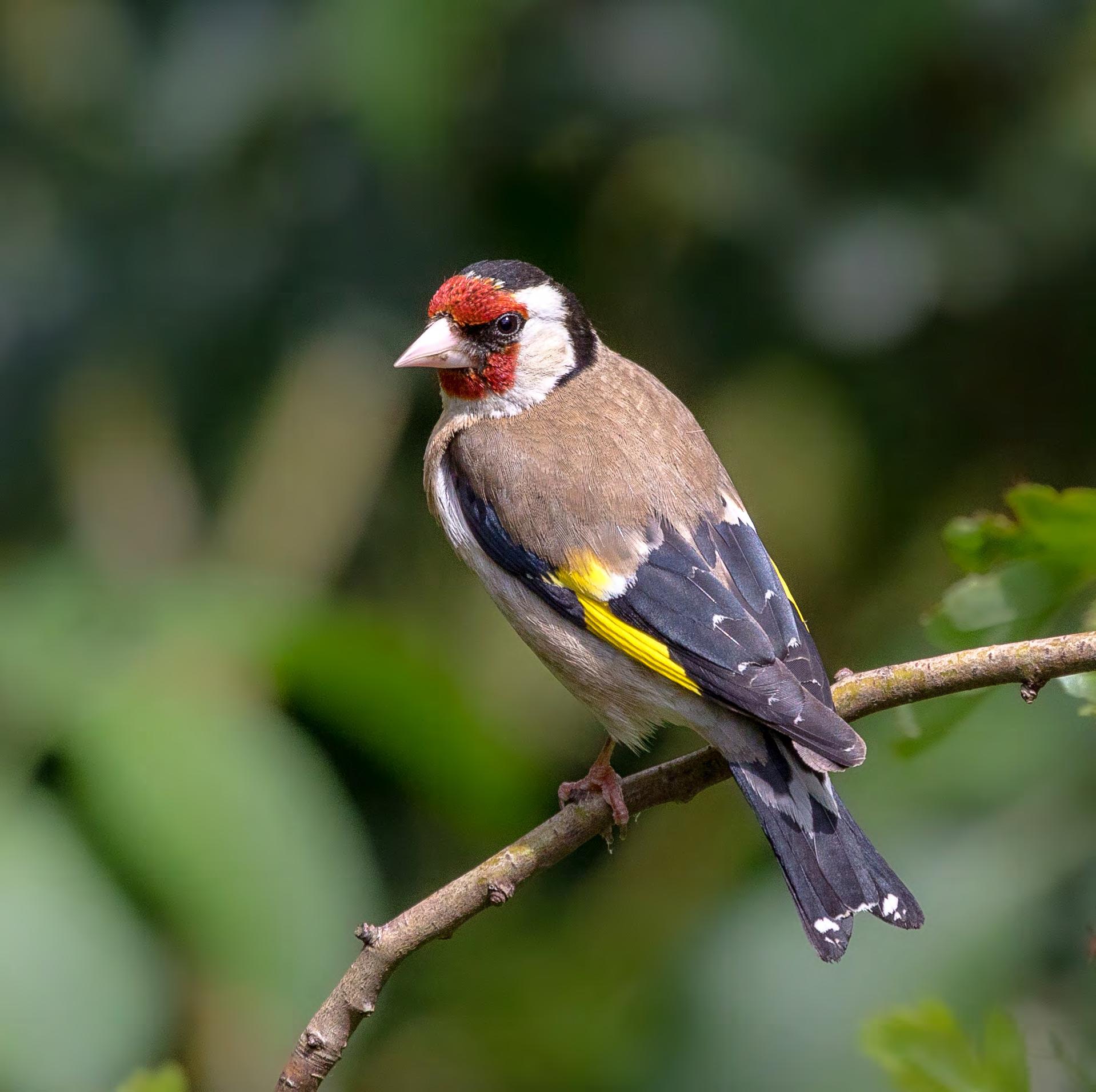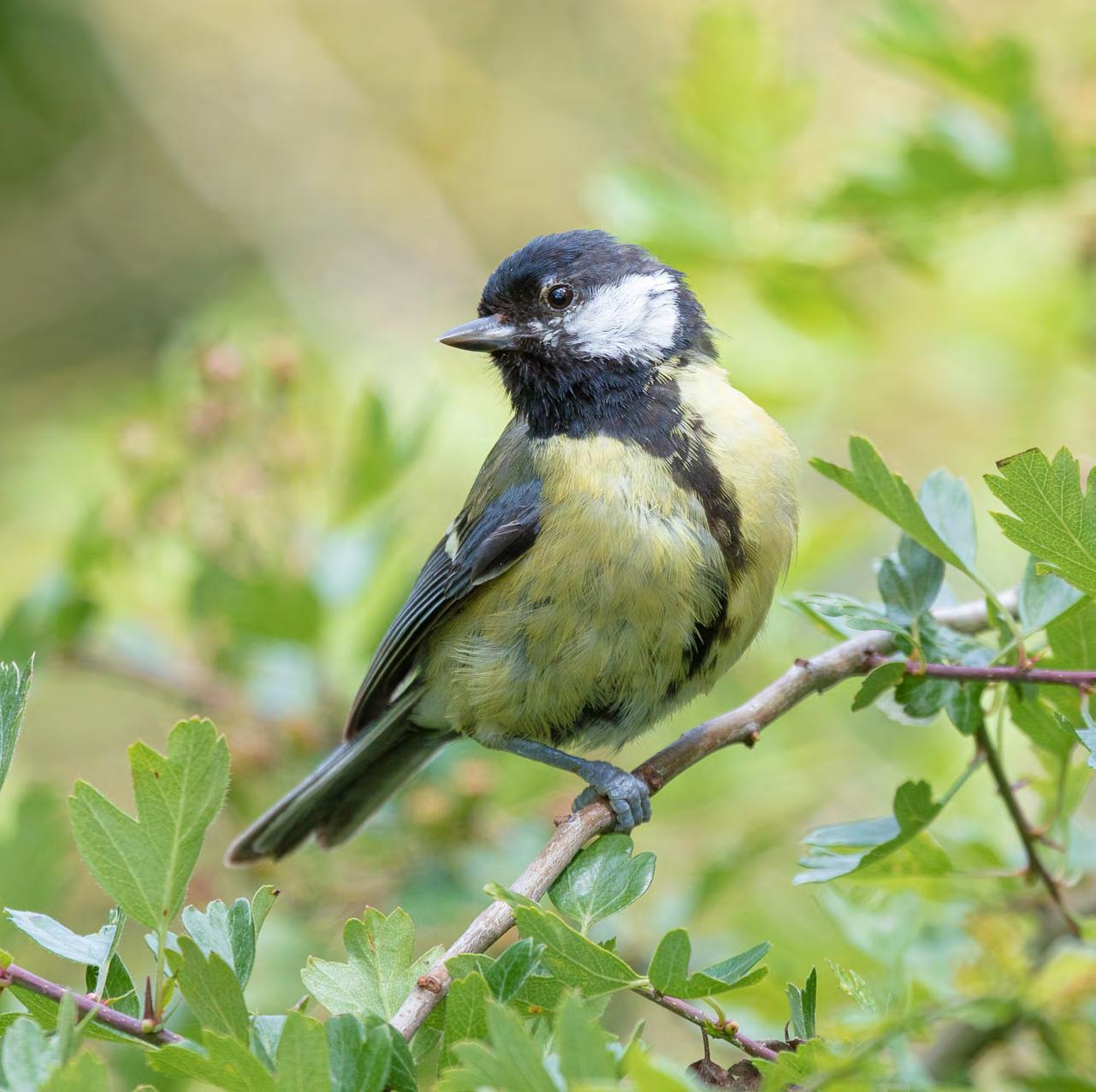
6 minute read
Birds of Calke
Birds of Calke
Overall population decline in British birds has been primarily attributed to changes in land usage from seminatural to intensive agricultural use, resulting in loss of habitat including hedgerows, and the use of pesticides. Ecological research has confirmed the links between agricultural change (in particular pesticide use) and declines in some bird species. Bird species at Calke Abbey noted and photographed for this study consisted primarily of passerine species, corvids, and some larger birds including birds of prey.
Advertisement
Winners on feeders
Three finch species have shown no comparable declines in population when studied against other British bird species, namely the Greenfinch (Chloris chloris), Chaffinch (Fringilla coelebs) and Goldfinch (Carduelis carduelis). These are relatively abundant at Calke and can also be spotted on the supplementary feeders in the bird hides on the estate. It is suggested that these birds have generally benefited from pheasant feed sites throughout Britain
which are maintained overwinter, with changes in land use to game shooting as a profitable business for landowners. It is likely that these species benefit from garden supplementary bird feeders such as the ones at Calke and surrounding gardens, with provision of seeds and nuts throughout the year, particularly in the winter months.
Grey squirrels are an ever-present feature at many urban and suburban bird feeding stations in Britain. While photographing birds for this study at the main bird hide at Calke, it was noted that greys would regularly dominate the bird feeding areas. Bird feeding behaviour appeared to be negatively impacted by the presence of squirrels near to or on the feeders. However, research suggests no evidence is found of grey squirrels having a negative impact on supplementary feeding and assemblage of avian species at feeding stations, which is some consolation for those concerned about the presence of greys at Calke’s bird hides.

House Sparrow (Passer domesticus) photographed at the Calke bird hide
Clare Lusher

Goldfinch (Carduelis carduelis).
Clare Lusher
Agricultural impact
Seed-eating birds have declined primarily because of intensive herbicide use on farmland and changes in cereal production times, which has catastrophically reduced food supplies for these species. Population declines in these groups are associated with lower survival rates and reproductive rates.
Losers in the race for agricultural change include bird species associated with farmland and grassland such as the Tree Sparrow (Passer montanus) Reed Bunting (Emberiza schoeniclus) and the Corn Bunting (Miliaria calandra). The grey partridge has declined due to many factors including as a result of increased pesticide usage resulting in decreased chick survival rates. For reed buntings, the loss of winter food as a result of changes in tillage practices have been directly linked to population decline of the species.
In the early 19th century, changes occurred within semi-natural habitats including heathland and moorland whereby land was more intensively utilised for agriculture which had a significant effect on British bird populations. Only small numbers of bird species have apparently benefited from changes in agricultural land use and intensification of farming. As Calke utilises some of its parkland for grazing of cattle and sheep, this might raise concerns for the impact it may have on bird species on the estate.
Raptors
Most large raptors are opportunistic scavengers rather than the predatory animals many farmers, gamekeepers and landowners appear to suggest. Predation on live domestic stock is shown to be rare, while scavenging on farm land by raptors is common.

Greenfinch (Juvenile) (Chloris chloris). This juvenile was being fed occsasionally by a parent at the main Calke bird hide.
Clare Lusher

Greenfinch (Chloris chloris).
Clare Lusher

Great Tit (juvenile) (Parus major).
Clare Lusher
Some studies have shown that raptors and other predators take mainly diseased and older animals, while newer studies show raptors will predate on game birds and depress stock populations where agricultural intensification has removed protection cover for prey animals and where efforts to reduce predation (e.g. penning) have not been undertaken.
Little owls (Athene noctua) are reported to have been regularly annually observed at Calke, often seen sitting on fences within the deer enclosures during the day and at dusk. However, none were observed during the completion of this project. Buzzards (Buteo buteo) were present on the estate and were noted on two occasions soaring above the deer enclosures and parkland.
Wetland birds
Wetland birds observed at Calke for this study include Mute Swan (Cygnus olor), Mallard (Anas platyrhynchos) and the non-native Mandarin Duck (Aix galericulata). Pair-bonded mandarin ducks were observed on Mere Pond at Calke in early spring and it is assumed they nested as the female was seen throughout June and July with 6 chicks in tow. A single Goosander (Mergus merganser) was noted early in the year on Mere Pond during this study. It was noted that there is less diversity of wetland species at Calke than may be seen at other locations such as Markeaton Park in Derby and Wollaton Park in Nottingham.
A conservation success can be seen in the case of the mute swan. Several factors were attributed to regional and national declines in mute swan populations, but the single biggest cause of death was shown to be from the use of lead weights amongst anglers. With a change in law banning their use, populations have recovered significantly and continue to increase.

Great Spotted Woodpecker (Juvenile) (Dendrocopos major) photographed at the Calke bird hide being fed by a parent.
Clare Lusher
Great Spotted Woodpeckers are omnivorous and diet may include beetle larvae and other invertebrates including ants, flies, beetles and spiders. Other larvae may be eaten where available including Lepidoptera larvae (caterpillars) and they have been known to feed on carrion, suet and scraps from supplementary feeders. It was therefore interesting to see a parent feed a juvenile from the bird feeding stations at Calke.

Great Spotted Woodpecker (Juvenile) (Dendrocopos major)
Clare Lusher

Carrion Crow (Corvus corone). This individual opportunistically flew off with a discarded cream pot from a visitor’s cream tea.
Clare Lusher
Corvids
Various game and conservation groups have called for trial culls of corvid species, citing the importance of managing wild populations of game birds and the need to control crow and magpie populations. Some songbird conservationists support the idea of a cull and cite the need to control predation of British songbirds by larger birds including corvids. However, research by the British Trust for Ornithology (BTO) showed no evidence that avian predator population increases are associated with songbird population declines. 22 of the 29 prey species studied showed no statistically significant link between predator numbers and decline of prey species.
The BTO study showed that predator numbers have increased in conjunction with prey species increases, showing a positive association between predator and prey. These results applied in particular to the Magpie (Pica pica), Jay (Garrulus glandarius) and Carrion
In study tests crows have been seen to have remarkable cognitive skills. Research has shown that crows evolved a high-capacity working memory, demonstrating the evolution of higher cognitive abilities. Corvids show analogical reasoning, episodiclike memory (contextualised memory), tool use, complex social interactions and evident insight into the mental state of members of the same species. These results surpass most mammals in similar tests and equate to similar primate test results.
Interaction with crows at Calke or elsewhere confirms that these are social birds, preferring to forage in large groups within the parkland and woodland edge habitats. Veteran oak trees and aerial deadwood are favoured as perching and lookout locations by carrions crows and jackdaws, both species fairly abundant on the estate. They engage in constant communication using various calls and chattering sounds while foraging and socialising in large numbers. They are also opportunistic scavengers, as witnessed while at one

European Robin (Erithacus rubecula) photographed at the main Calke bird hide
Clare Lusher

Female Chaffinch (Juvenile) (Cyanistes caeruleus). An advanced juvenile plumage showing more colouring and feather development.
Clare Lusher


